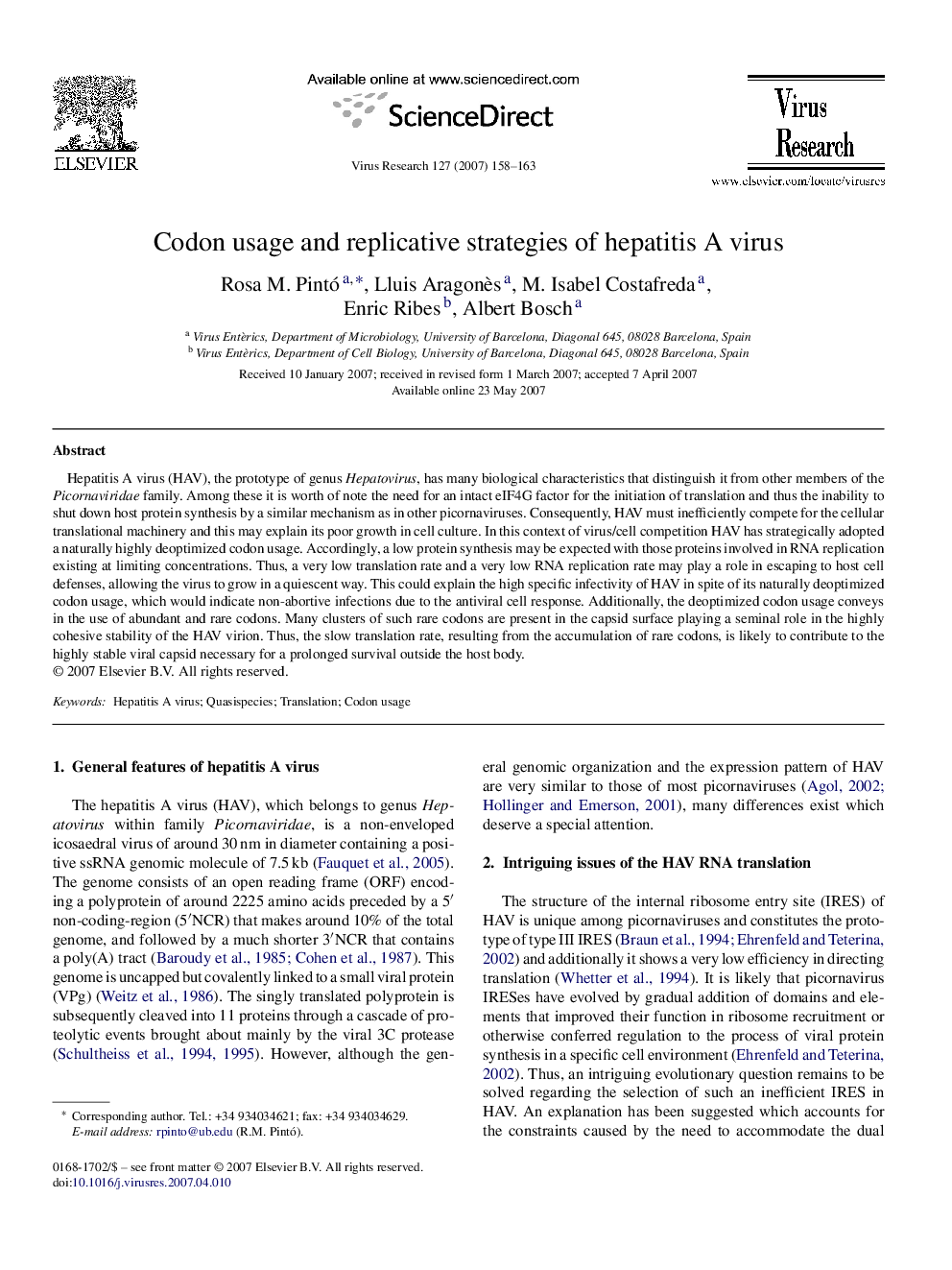| کد مقاله | کد نشریه | سال انتشار | مقاله انگلیسی | نسخه تمام متن |
|---|---|---|---|---|
| 3430735 | 1228282 | 2007 | 6 صفحه PDF | دانلود رایگان |

Hepatitis A virus (HAV), the prototype of genus Hepatovirus, has many biological characteristics that distinguish it from other members of the Picornaviridae family. Among these it is worth of note the need for an intact eIF4G factor for the initiation of translation and thus the inability to shut down host protein synthesis by a similar mechanism as in other picornaviruses. Consequently, HAV must inefficiently compete for the cellular translational machinery and this may explain its poor growth in cell culture. In this context of virus/cell competition HAV has strategically adopted a naturally highly deoptimized codon usage. Accordingly, a low protein synthesis may be expected with those proteins involved in RNA replication existing at limiting concentrations. Thus, a very low translation rate and a very low RNA replication rate may play a role in escaping to host cell defenses, allowing the virus to grow in a quiescent way. This could explain the high specific infectivity of HAV in spite of its naturally deoptimized codon usage, which would indicate non-abortive infections due to the antiviral cell response. Additionally, the deoptimized codon usage conveys in the use of abundant and rare codons. Many clusters of such rare codons are present in the capsid surface playing a seminal role in the highly cohesive stability of the HAV virion. Thus, the slow translation rate, resulting from the accumulation of rare codons, is likely to contribute to the highly stable viral capsid necessary for a prolonged survival outside the host body.
Journal: Virus Research - Volume 127, Issue 2, August 2007, Pages 158–163